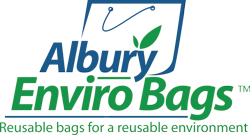If you haven’t heard of jute, chances are you will very soon. It’s a fibre produced from the jute plant (Corchorus olitorius and Corchuris capsularis in Latin) which is becoming increasingly common in the production of items such as green bags , rope, sacks and much more.
Jute is a biodegradable and compostable fibre which has been identified as a particularly important resource for those with environmental concerns. Since common materials such as plastics are non-biodegradable, taking centuries to break down and are harmful to wildlife who may die from ingesting them, it’s becoming more and more crucial to find viable production alternatives. Jute is one of the best alternatives around.
In terms of usage, production and availability, jute is the second most important vegetable fibre on Earth, after cotton. With excellent tensile strength, low extensibility and better breathability than most alternatives, it is used to produce common items such as bags, rope, sacks, hessian cloths, floor coverings and more.
A perfect way to understand the biodegradability of jute is the fact that it’s used for plant bags which allow young trees to be planted in the soil without having to worry about the damage that can be done when removing them from their containers. Because jute bags are 100% compostable and biodegradable, there is also zero chance of the plants disturbing the roots.
Aside from being good for the environment in its own right due to its biodegradability, the production of jute is also better for the environment. Its main competitor, polypropylene fibre, requires up to 20 times more energy consumption during the production phase, making jute a far better option in the fight against global warming.
Quick facts about Jute
- The annual global production of jute fibres is about 3 million tonnes per year.
- 90 per cent of the world’s production of jute occurs in Bangladesh, India and Thailand, with the majority of production concentrated in the Ganges Delta (which is mostly in Bangladesh)
- The jute plant grows very quickly. It can reach a height of up to 4.5 metres in a matter of just five months
- There are various stages of extracting jute from its plant. These stages include retting, stripping, washing and drying. The whole process takes about three weeks.
- Jute can be anything from light tan to brown in colour, though it can be easily bleached or combined with dyes to produce different colours in products such as promotional bags.
- Jute provides a livelihood for over four million farming families in some of the poorer parts of the world.
- Jute requires temperatures of between 24 and 38 degrees Celsius and a minimum of 100cm rainfall to be cultivated successfully.
- Jute is classified into eight categories ranging from W1 to W8. W1 jute has very good strength and colour, is heavy-bodied and free from major and minor defects, while W7 jute is a weak, mixed fibre with maximum root content. W8 is entangled jute which doesn’t fall into any of the other categories, but which could still be of commercial value.
- Jute plants take about 90 to 100 days to reach 8 to 12 feet high, which is their harvesting height




